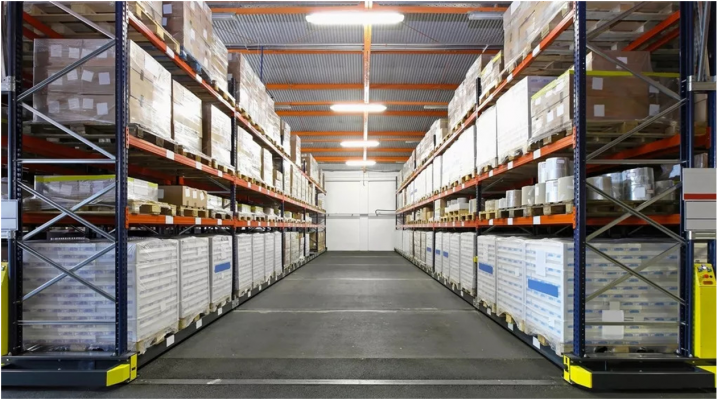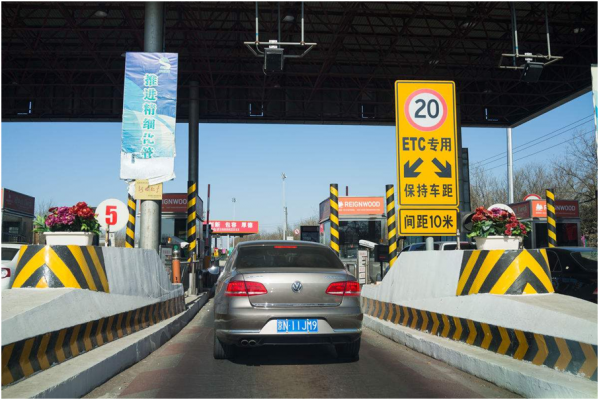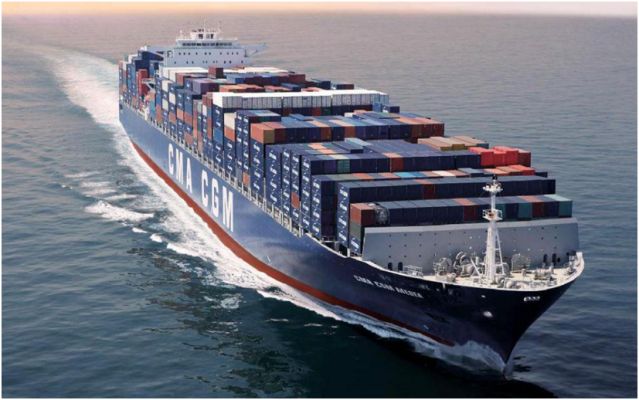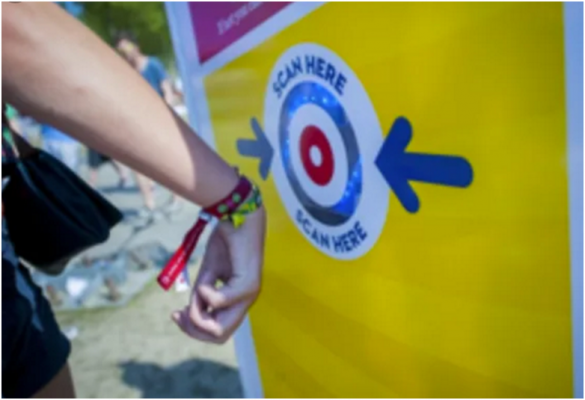RFID Applications and Solutions

What is RFID?
RFID is an acronym for “radio-frequency identification” and refers to a technology whereby digital data encoded in RFID tags or smart labels are captured by a reader via radio waves. Most commonly, an RFID tag consists of a microchip attached to a radio antenna mounted on a substrate. The tags contain electronically stored information.
RFID is widely used to identify and track the objects by attached tags automatically. It uses electromagnetic waves to read and extract the information stored in the chip of RFID tags.
RFID is used to reduce time and labor and improve real time data accuracy.
You may be surprised to find that you have been using RFID technology for years without knowing it.
If you are considering implementing RFID Applications and Solutions, please feel free to contact the RFID experts at Airplux to choose the Right RFID Antennas for your projects.
How RFID technology works?
RFID system uses tags, or labels attached to the objects to be identified. For RFID Applications and Solutions, the RFID hardware system includes three parts, tag, antenna and reader. The reader with antenna send a signal to the tag and read its response.
RFID tags can be either passive, active or battery-assisted passive.Tags may either be read-only, having a factory-assigned serial number that is used as a key into a database, or may be read/write, where object-specific data can be written into the tag by the system user. RFID tags contain at least three parts: an integrated circuit that stores and processes information and that modulates and demodulates radio-frequency (RF) signals; a means of collecting DC power from the incident reader signal; and an antenna for receiving and transmitting the signal. The tag information is stored in a non-volatile memory. The RFID tag includes either fixed or programmable logic for processing the transmission and sensor data, respectively.
An RFID reader transmits an encoded radio signal to interrogate the tag. The RFID tag receives the message and then responds with its identification and other information. This may be only a unique tag serial number, or may be product-related information such as a stock number, lot or batch number, production date, or other specific information. Since tags have individual serial numbers, the RFID system design can discriminate among several tags that might be within the range of the RFID reader and read them simultaneously.
Band | Regulations | Range | Data speed | ISO/IEC 18000section | Remarks |
120–150 kHz (LF) | Unregulated | 10 cm | Low | Animal identification, factory data collection | |
13.56 MHz (HF) | ISM bandworldwide | 10 cm–1 m | Low to moderate | Smart cards (ISO/IEC 15693, ISO/IEC 14443 A, B). ISO-non-compliant memory cards (Mifare Classic, iCLASS, Legic, Felica …). ISO-compatible microprocessor cards (Desfire EV1, Seos) | |
433 MHz (UHF) | Short range devices | 1–100 m | Moderate | Defense applications, with active tags | |
865–868 MHz (Europe) | ISM band | 1–12 m | Moderate to high | EAN, various standards; used by railroads | |
2450–5800 MHz (microwave) | ISM band | 1–2 m | High | 802.11 WLAN, Bluetooth standards | |
3.1–10 GHz (microwave) | Ultra wide band | Up to 200 m | High | Not defined | Requires semi-active or active tags |
RFID Applications
RFID technology is used in many industries and variety of RFID Applications and Solutions.
Inventory management or Warehouse management
The use of RFID for inventory management requires a scanner which uses radio waves to communicate with an RFID tag. The tag itself contains a microchip which allows the reader to read data and also write data to the tag for real-time updating in place. Each tag is wrapped in a material like plastic or paper for protection and can be affixed to a variety of surfaces for tracking. Most tags used for inventory tracking are passive RFID tags, meaning they contain no battery and are powered by the waves from the readers. Active tags are powered, come at a higher cost, and are used for long-range tracking of machinery such as trucks and railway cars.

ETC (Electronic toll collection)
Electronic toll collection (ETC) designed to eliminate the delay on toll roads by collecting tolls electronically. ETC determines whether the cars passing are enrolled in the program, alerts enforcers for those that are not, and electronically debits the accounts of registered car owners without requiring them to stop.
ETC uses passive radio frequency identification technology (RFID). RFID tag is mounted on the vehicle’s windscreen. As the vehicle reaches the toll gate, a unique identification number that is embedded on the tag is read by road side RFID reader.

Logistics and Supply Chain management
Companies have been increasingly using item-level Radio Frequency IDentification (RFID) to trace and track the goods for inventory control purpose and also and supply chain management. Tagging every single product, not only improves the visibility of goods transport in the entire supply chain processes but also helping to remove common problems like inventory shortages in the supply chain.

Animals and Farming
Tracking livestock with RFID is one of the oldest uses of the technology. Typically, animals have a plastic tag inserted through their ear, or a subcutaneous tag inserted under their hide—or, in the case of cows, they swallow a bolus tag that remains in their stomach. Each RFID transponder’s ID number is then assigned to a specific animal.
Sometimes, RFID readers are set up at the gates through which animals pass, so that farmers can know for certain that each animal has returned from the field to the barn. Interrogators can also be set up at milking stations, to monitor the amount of milk produced by each cow.

Jewellery management
In the case of jewellery, counting these pieces manually with barcodes is an intensive and time-consuming job. Consequently, the use of RFID UHF tags has meant an improvement and saving. RFID technology provides a huge benefit to the jewellery industry that was previously lost during work hours, losses and thefts.
RFID implementations for jewellery provide an end-to-end solution from the first inventory to the final sale of the item. The item is marked with an RFID tag, with which the inventory is fed of information thanks to the readers who are located in different strategic points of the store. Any item in the inventory that is not read within the room or leaving it activates the alarms.
The RFID system makes the hard task of objects traceability who require a lot of security easier, with this system accounting and control are carried out more quickly and precisely. RFID technology for jewellery increases efficiency and improves working conditions.

Healthcare and medical
The goal of nursing is to be able to promote health and healing by delivering safe patient care. RFID technology has provided positive patient outcomes in clinical practice through a means of safer patient identification.
Positive patient identification practices are at the forefront of patient safety initiatives in healthcare. RFID has the potential to offer more sophisticated services for identifying patients than standard barcode technology due to its ability to report up-to-date data in real time (Coustasse et al., 2015b.
Nurses play a significant role in tracking healthcare organizations resources.

Leisure and Sports
From tourists, spectators, sports club subscribers to users of sport equipment, everyone can enjoy the benefits of access control by RFID or NFC applications.

Airlines and Airports
When luggage is taken to the hold of the aircraft, tracking is monitored in real time by RFID readers at the key control points, meaning that priority baggage can be identified and handled more quickly, for example when there is a tight correspondence between two flights.
RFID readers also provide invaluable help if a passenger is not present at boarding or has to get off the plane.
The tracking accuracy provided by RFID technology could reduce baggage handling error rates by 25% in airports by 2022, according to a recent study by SITA and the IATA.

Benefits of Using RFID
RFID offers advantages over manual systems or use of bar codes. There is lots of benefits of using RFID Applications and Solutions.
- Reduces waste
- Decreases claims and deductions
- Reduces inventory handling costs
- Increases distribution center productivity
- Helps to create a more adaptable supply chain
- Decreases the need for manual checks and counts
- Helps to reduce out-of-stocks and improve inventory turns
- Helps prevent the distribution and sale of counterfeit products
About Airplux Technologies
Airplux Technologies is one professional Antenna manufacturer which is integrating R&D, production and sales of antennas. Airplux manufactures superior quality DAS antennas, WiFi antennas, RFID antennas, IOT antennas, Base Station antennas and customized antennas from 350MHz to 6GHz. Airplux specializes in the production of custom antennas and related accessories.
Airplux has a completed line of RFID Antennas, they’re used in a variety of RFID applications and solutions, such as Access control, Transportation and logistics, Retail, Tracking of goods, Tracking of persons and animals, Toll collection and contactless payment, Airport baggage tracking logistics, Timing sporting events. Its RFID Antennas are deployed in different RFID systems around the world by system integrators, enterprises, factories,companies,etc.
Please contact us for more detailed info or any inquiry: info@airpluxtec.com
